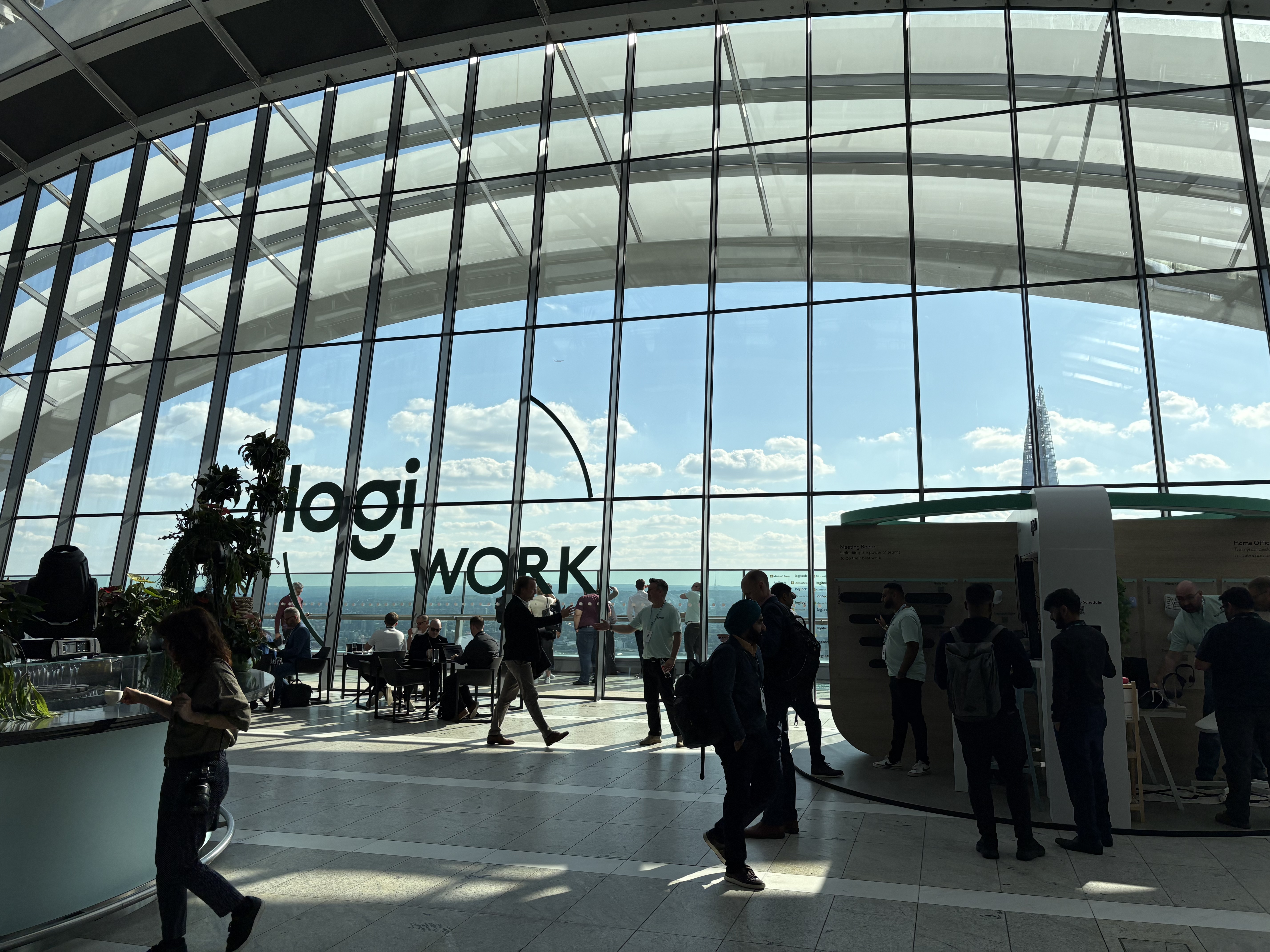“Everything changed the moment we brought work into our house” - Logitech’s product guru tells us why the mouse and keyboard aren’t going anywhere, even in the AI age
Work smarter, not harder, Logitech says

With hybrid working now a common process for most of us, the need to ensure we are productive and efficient outside of the office has never been higher.
Working from home poses unique challenges for each one of us - whether that’s being forced to work at the kitchen table, or squeezed onto a sofa, or simply missing that second monitor in the office.
So how can individuals and businesses alike make sure their workers get the most out of their hardware? I spoke to Art O'Gnimh, VP & General Manager of Logitech’s Core Personal Workspace Solutions Business Unit, to find out.
Being the bridge
“We don't define ourselves as a mouse and keyboard company - we define ourselves as being the bridge between the physical and digital world,” O'Gnimh told me at the recent Logi Work 2025 event in London.
“For individuals, everything changed the moment we brought work into our house,” he notes, highlighting how this change brought not just new spaces, but new habits and new tools, with many people forced to fit work around everything else they do.
This move also ushered in an evolution in how people actually work, O'Gnimh says, as more people began using both a work and a personal laptop at home - devices which were never meant to interact, and with different tasks being contained and carried out on each, began leading to tensions and frictions that massively damaged productivity.
These tensions weren’t disappearing when people headed back to the office either, as businesses now had to address the needs of employees who now just expect devices to work, with no friction, but still with desirable hardware - along with IT departments demanding higher needs and priorities in terms of security, device management, but also sustainability.
Sign up to the TechRadar Pro newsletter to get all the top news, opinion, features and guidance your business needs to succeed!
“The world changes and we need to identify ways that it is changing, as it creates new habits, new tensions, and new needs,” O’Gnimh says, “if we can spot those needs and address them together, we can truly shape the future of work, and make it work so much better and so much smarter, making life so much better.”
Chief among those needs, particularly as using a computer or laptop is a central part of most jobs, is comfort - an area where Logitech’s ergonomic devices, including its newly-released MX Master 4 mouse, can play a key role.
“What we try to do is make people not have to compromise ergonomics and well-being and performance for the desirability of the product,” O’Gnimh says, “we can help people to live better and feel better.”

Feeling immersed in a task can also help productivity, and O’Gnimh has an interesting parallel between computing accessories and other, more simple tasks.
“Creation is something you do with two hands,” he notes, “pottery, baking, you do it with two hands, it's the same with any creative task - you don’t want to think about the tools, they should just work, and everything should be where you expect it to be.”
This could be especially true in the next age of work, as AI plays more of a role in many tasks and roles. How human workers interact with AI systems will greatly affect their efficiency and productivity, and Logitech wants to ensure its users are correctly placed to get the most out of these systems.
In her keynote at the event, Logitech CEO Hanneke Faber had pointed out how hardware could be, “the hands, eyes, and ears of AI”, and O’Gnimh was keen to outline how Logitech is heavily involved in future casting to stay on top of trends.
“What we see in a few years time, the future of us relating with AI agents - there will be conversation, so we’ll need microphones that are able to capture speech…and we have speakers because we have to hear back,” he notes, highlighting that half a billion people have their hands on a Logitech mouse every day, “so these people have one touch away now from whatever AI tool they want.”
“Also, these agents, our partner, need to be able to understand what is being said - and so for that we have webcams…that can let a creation partner understand what mood I’m in, am I confused, am I nonplussed - and that context capture is a really important part of the future of co-creation with AIs, we believe.”
Humans in control
Ultimately though, O’Gnimh believes that physicality will still be required in the digital world, with humans needing to trigger actions, edit output, and much more.
“Humans need to have the agency to control what's happening, what the AI is doing - we need to be in control at the beginning of the process, and we also need control at the end of the process to double-check,” he says, noting how humans “need to be the gate” with AI.
“I don’t think mice and keyboards will be going away, but I think other things will join and will be added to ways of interaction,” he says, outlining how tablets were being predicted as “the death of the mouse” a decade ago.
“Our job is to extend human potential at work, and I know that the work my team and I do can do that, because we hear that from people who use our products - they’re able to produce and perform their tasks just a little bit better, they’re able to create just a little bit easier, and connect with each other better and be able to feel better at the end of a day of work...it’s really making a meaningful difference in people’s lives.”
“But our job is never over - because there are great challenges, opportunities for us to exercise our curiosity…and our job is never boring, as the world of work is constantly evolving.”
Follow TechRadar on Google News and add us as a preferred source to get our expert news, reviews, and opinion in your feeds. Make sure to click the Follow button!
And of course you can also follow TechRadar on TikTok for news, reviews, unboxings in video form, and get regular updates from us on WhatsApp too.
- We've also rounded up the best wireless mouse choices around

Mike Moore is Deputy Editor at TechRadar Pro. He has worked as a B2B and B2C tech journalist for nearly a decade, including at one of the UK's leading national newspapers and fellow Future title ITProPortal, and when he's not keeping track of all the latest enterprise and workplace trends, can most likely be found watching, following or taking part in some kind of sport.
You must confirm your public display name before commenting
Please logout and then login again, you will then be prompted to enter your display name.